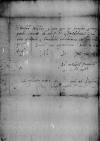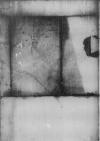List #820
Bona Sforza do Ioannes DANTISCUSNiepołomice, 1532-08-27
Rękopiśmienne podstawy źródłowe:
Publikacje:
| ||||||
Tekst + aparat krytyczny + komentarz Zwykły tekst Tekst + komentarz Tekst + aparat krytyczny
Reverendo in paper damaged⌈[Reverendo in]Reverendo in paper damaged⌉ Christo Patri, domino
Reverende in Christo Pater, domine nobis sincere dilecte.
Non modum acceptum nobis fuit Paternitatis Tuae consilium, quin immo nil penitus ab eius sententia declinavimus in transmittendis equis eunuchis ad nonnullos
Mittimus Paternitati Tuae cervinas carnes ex venatione nostra, quibus vescetur cum amicis et convivis suis, nam intelligimus illam ante reditum
Et bene valeat hidden by binding⌈[t]t hidden by binding⌉ Paternitas Tua.
Datum ex
Ad mandatum proprium serenissimae
Postscript:
Perscribat nobis Paternitas Tua text damaged⌈[Tua]Tua text damaged⌉, quisnam



 BCz, 3465, p. 232
BCz, 3465, p. 232